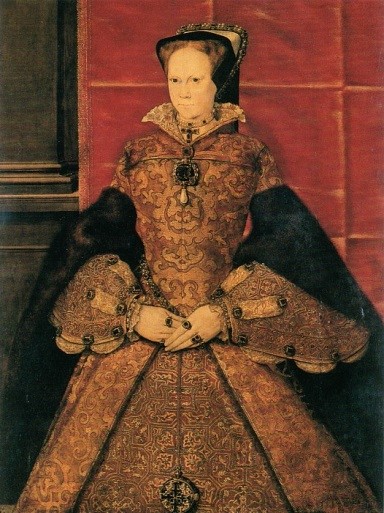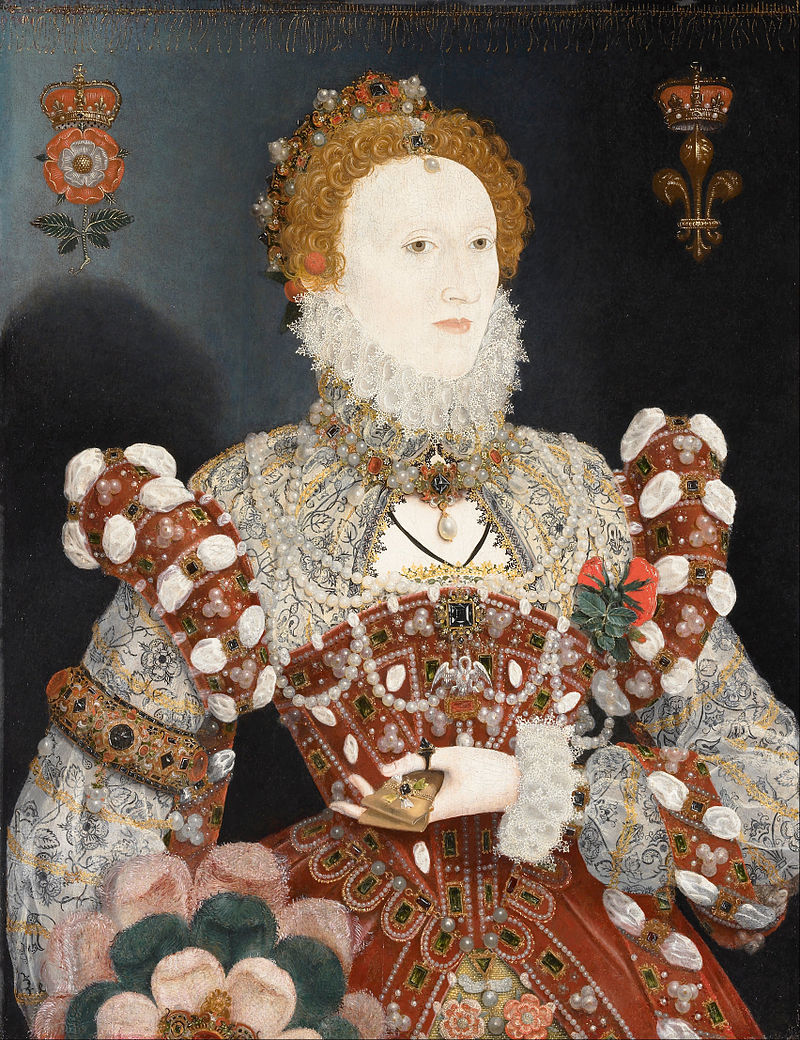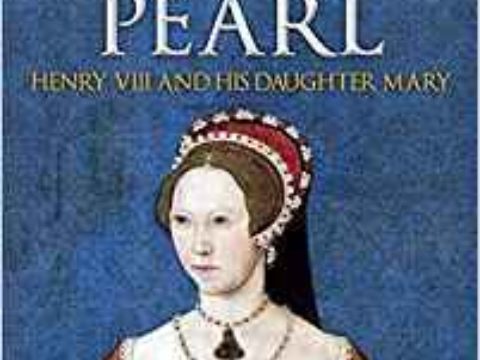Lessons in Queenship
by Leanda de Lisle
Mary I and Elizabeth I
Re-examining the reputation of Mary I, first queen-regnant of England is key to freeing us from the shackles of old myths when we come to look at the Tudor period.

Mary’s reputation has, like that of Lady Jane Grey, been shaped for centuries by a combination of sexual and religious prejudice. In Mary’s case this is further complicated by the fact it is the heirs of her ideological opponents who have written her story. Even in the twenty-first century some popular historians continue to describe Mary as an hysterical, weak little woman, easily dominated by men, we are told ‘her upbringing ..had not given her the skill of leadership’ and that she had ‘none of the guile and shrewdness necessary to succeed in the fickle world of Tudor politics’. She is ever the dark, damp little cloud to her sister Elizabeth’s glorious sun.

The truth is that Elizabeth had enjoyed far less useful training in the ‘skill of leadership’ than Mary had. Mary had been raised as her father’s heir until well into her teens and since 1543, aged twenty-seven, she had been her brother’s heir. For the past five years Mary had also been a great landed magnate, a role held almost exclusively by men, yet one in which she had had the example of her childhood governess, Margaret Pole, Countess of Salisbury. The influence of Mary’s mother, Katherine of Aragon, also remained important. The late Queen had played up to gender expectations, but the same woman who had sewn the banners for the army at Flodden, had been prepared to send James IV’s head to her husband as a personal gift. Even Henry VIII had spoken with awe of Katherine of Aragon’s ability to wage a fierce war.
Mary, far from having ‘none of the guile and shrewdness necessary’ for Tudor politics, knew very well the necessity of compromise and duplicity when playing for high stakes, especially from a position of weakness. She was also capable of acting with extraordinary courage and boldness. She won her crown on the battlefield and with widespread popular support against a powerful elite. She then faced rebellion and invasion at the hands of a Protestant minority, who wrote justifications for her murder, much as Elizabeth later did at the hands of Catholics.
Mary’s burning of nearly three hundred Protestants for heresy was grotesque and she must take full responsibility for it – this was not pressed on her by priests as some have claimed. She burned more of her subjects that any other monarch in Europe – but from her perspective it was working, snuffing out Protestantism in England without a religious war. Nor should her monstrous crime be contrasted with Elizabeth’s supposed moderation, or unwillingness to ‘look into men’s souls’ (which was said of her not by her). Elizabeth’s orders after the damp squib of the Northern rebellion saw the execution of 900 people – nine times the numbers Mary executed after the Wyatt revolt which nearly overran the court and four times those Henry VIII had executed after the Pilgrimage of Grace which was the greatest rebellion in English history since the Peasants revolt.
When Mary died aged forty-two during a private mass in St James’s Palace on 17 November 1559, even her husband Philip, who had not loved her, felt ‘regret’ at her passing. Mary had been unlucky that her health broken down within not much than a year of her accession and in the very public manner of a phantom pregnancy. She had failed in the essential task of having a child and as she suspected, Elizabeth would undo much of her religious legacy - but not all. England was not to be a Catholic country. But Mary’s Counter Reformation had restored a Catholic identity that would survive centuries of propaganda and persecution.
Inevitably Mary’s reputation would suffer from being recorded by the Protestant victors of the English Reformation struggle. The result is that she is remembered better for her failures than her successes. But Elizabeth respected her sister’s abilities as a Queen and recognised the difficulties she had faced. Mary’s rule had also set a template for Elizabeth in the role of an English Queen regnant.
Although it is often claimed that Mary lacked Elizabeth’s charisma, her qualities in this regard had been demonstrated before her illness took hold: in 1553, when Mary had confronted Jane’s supporters and taken the throne, and 1554, when her speech at the Guildhall roused London in her defence against the Wyatt revolt. Mary had spoken then of her marriage to her kingdom, describing her coronation ring as a wedding band, and her love of her subjects as that of a mother for her children. These were phrases and motifs that Elizabeth would use repeatedly and would become absolutely central to her Queenship.
It was thanks to Mary that Elizabeth could expect to claim the powers of a King and Elizabeth further intended to shape a religious settlement of her choice, as Mary had. Finally, Mary’s reign forewarned Elizabeth of dangers ahead. England was at war with France and while Elizabeth hoped to make peace, her cousin Mary, Queen of Scots was now married to the French Dauphin. Mary I had faced the French threat with a Spanish husband, but Elizabeth was highly sensitive to the fact that that marriage had triggered a revolt, while Jane Grey had been tarnished by an English marriage to the mere younger son of a made-up nobleman. And who else was there as a possible husband? One Councillor expressed the view to Feria that for Elizabeth ‘there was no one she can marry either outside the kingdom or within it’ with safety. It was a conclusion with which Elizabeth concurred, but there were still other dangers in ruling alone.
That summer the Protestant polemicist Christopher Goodman had argued in print that the obedience of a subject was dependent on a monarch obeying divine law, and that this excluded women from rule. The same view would be re-stated more forcibly a few weeks later in John Knox’s First Blast of the Trumpet Against the Monstrous Regiment (ie rule) of Women. According to Knox, a reigning Queen was, ‘repugnant to nature; an insult to God, a thing most contrary to his revealed will and approved ordinance; and finally, it is the subversion of good order, of all equity and justice.’
Although many assumed Elizabeth’s anger over her treatment at Mary’s hands meant she would act vengefully when it came to Mary’s burial no one was more aware than Elizabeth what they had in common as sisters, as Tudors, and now as Queens. Elizabeth ordered that King Henry’s funeral book be followed to the letter. She showed her sister great respect. That they could not love each other was a tragedy of time, circumstance and the dangers of fanaticism. In Christian belief God is love: somewhere along the line that got forgotten by both sides.








